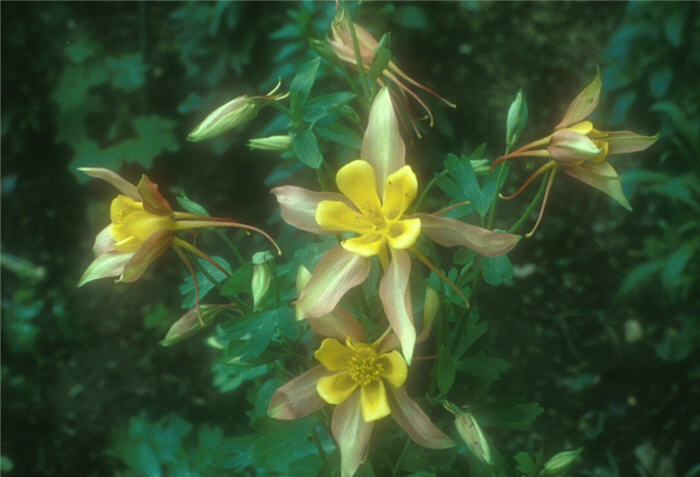| Botanical Name: Aquilegia hybrids 'McKana Giants' | |
| Common Name: McKana Giants Columbine |

-
Anatomy
-
Culture
-
Design
Plant Type
Perennial
Height Range
1-3'
Flower Color
Gold, Pink, Red, Violet, White, Multi-Colored
Flower Season
Spring, Summer
Leaf Color
Green
Bark Color
n/a
Fruit Color
n/a
Fruit Season
n/a
Sun
Half, Shade
Water
Medium, High
Growth Rate
Moderate
Soil Type
Sandy, Clay, Loam
Soil Condition
Average, Rich, Well-drained, Moist
Soil pH
Acid, Neutral
Adverse Factors
n/a
Design Styles
English Cottage, Ranch, Woodland
Accenting Features
Showy Flowers
Seasonal Interest
Spring
Location Uses
Entry, Perennial Border, Patio, Raised Planter, With Rocks
Special Uses
Container, Cut Flowers, Filler, Mass Planting, Naturalizing, Small Spaces
Attracts Wildlife
Hummingbirds
Information by: Stephanie Duer
Photographer: Linda Engstrom
Photographer: Linda Engstrom
-
Description
-
Notes
McKana Giant is a columbine cultivar named for its late spring, large, showy flowers in a mix of strong colors. Foliage is blue-green and deeply lobed. It is great in a cottage garden, it is an excellent cut flower. Grows about 26 to 30 inches tall and 12 to 18 inches wide.
Grow in well drained, loamy soil in full sun to full shade, though will need more water in full sun situations. Deadheading will usually prolong the bloom season, and as they make lovely cut flowers, snip them off and tuck them in a vase while they are still fresh. Generally, columbine go dormant during the hottest part of the summer; they are also usually a short-lived perennial but are generous reseeders if planted where they are content. Hybrids, however, are not true to seed so future generations of columbine may appear different if you planted hybrid forms. Hardy to USDA Zone 3. During blooming, they appreciate regular watering, but as they go dormant, reduce the frequency of irrigation.